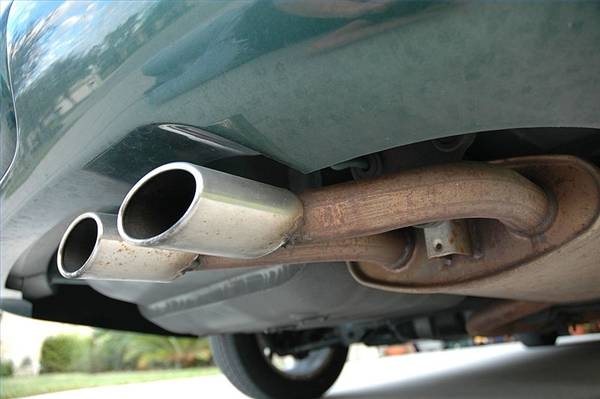
The exhaust system without a muffler would turn your car into a loud, resonating machine, amplifying the powerful sound waves created by exhaust gases coming out of the cylinder chambers after the combustion process. Thanks to the muffler, though, you can drive down the road with a minimum of noise pollution. But it all starts inside the engine.
The majority of vehicles you see on the road use four-stroke cycle engines. This refers to the piston reciprocating action inside the combustion chamber: intake down stroke, compression up stroke, power down stroke and exhaust up stroke. It is in this last part of the cycle when the pistons, through the valves, remove the burned gases created after the combustion or explosion of the fuel-air mixture during the power stroke. Every time the exhaust valves open, a loud blast of burned, hot gas enters the exhaust system.
As the burned gases enter the exhaust manifold, they travel down the catalytic converter and muffler, interconnected through a series of steel pipes. In the muffler, exhaust gases go through perforated acoustic tubes inside sections of baffled chambers, which weaken the stentorian sound created during the expulsion of the gases on the exhaust stroke. The baffled compartments in the muffler contain walls or screens that deflect the loud vibration, effectively dampening the sound before leaving through the tail pipe.
Baffled chambers are not the only effective way to dampen sound. Other mufflers use "glass pack." A straight through design lets the resonating burned gases travel down a perforated pipe surrounded by two thick layers of fiberglass that help not only absorb the loud sound vibration but eliminate back pressure to ease the flow of exhaust gases.
Some exhaust systems add resonators to their mufflers. Resonators connect to the back of the muffler through an intermediate exhaust pipe. They work as small mufflers, dampening any residual resonance traveling down the exhaust pipes.
To withstand the heat and corrosive chemicals contained in the burned gases coming out of the combustion chambers, most mufflers are made of steel with a coat of aluminum inside and out. On the outside, the aluminum helps protect the muffler from water, salt, dirt and other natural elements.

A muffler not only dampens the loud noise and pressure pulses created during engine exhaust. It helps to expel corrosive and highly poisonous gases. When an exhaust system develops a leak, you can hear the loud noise coming out of the engine exhaust stroke, but you cannot see the dangerous gases that might affect the driver and passengers in the car. If you can hear this loud noise, take your car for exhaust system service as soon as possible.